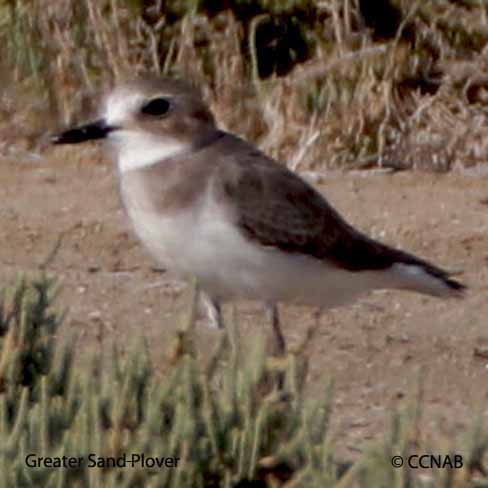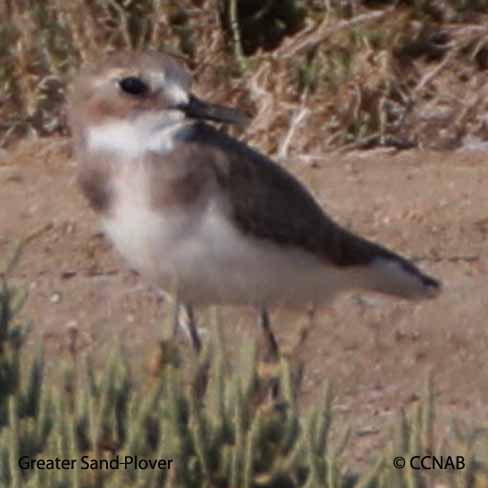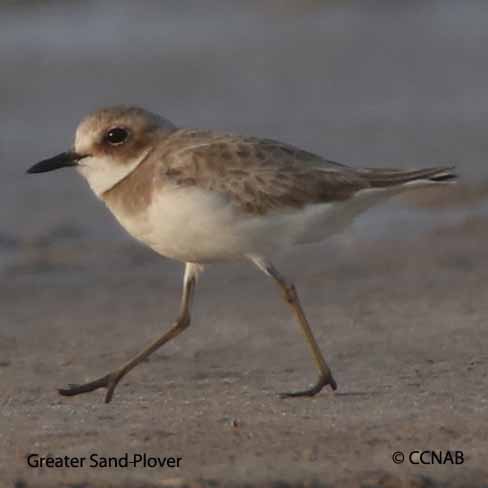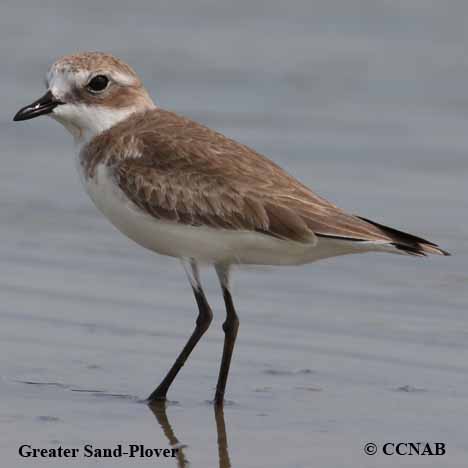North American Bird Search Box
This search box can be used to find bird species using bird's english, french or latin name, or to identify bird by its 4 letter Alpha Code
Field Guide for all the Birds of North America
Greater Sand-Plover
4 Letter (english names) Alpha Code: GSAP (5)
Pluvier de Leschenault
Anarhynchus leschenaultii
Information, images and range maps on over 1,000 birds of North America, including sub-species, vagrants, introduced birds and possibilities
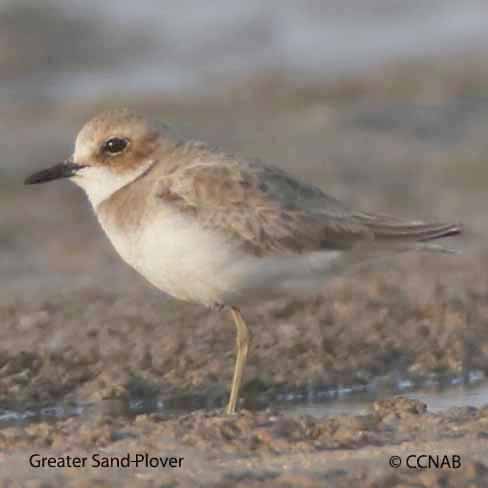
Life, Habitat & Pictures of North American Plovers
| B L | W W | W | Family | Latin Name |
|---|---|---|---|---|
| 9" 22.9cm | 22" 55.9cm | 3oz 85g | Charadriidae | Anarhynchus leschenaultii |
- Summer
- Year Around
- Winter
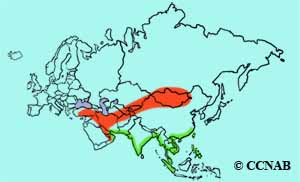
The Greater Sand-Plover is native to Eurasia and it breeds from Turkey to Mongolia. During the winter months, it will migrate as far as Australia. It is very similar in appearance to the Lesser Sand-Plover and was once known as the Mongolian Plover. It has been seen inside the perimeters of North America and is a recognized vagrant.
Reference to Other Bird Site:
ABA - American Birding Association This site represents an organization that maintains official records of all birds species that have been proven to have been seen inside the perimeters of the North American Continent and the surrounding bodies of water. Regular revised versions are posted to keep the bird list current at all times. This is the list used by all serious birders over their lifetime. You may be aware of the movie called the "Big Year". It was with this list that all the competing birders used in an attempt to set a new record as to how many bird species that could be seen by an individual birder in one calendar year.
